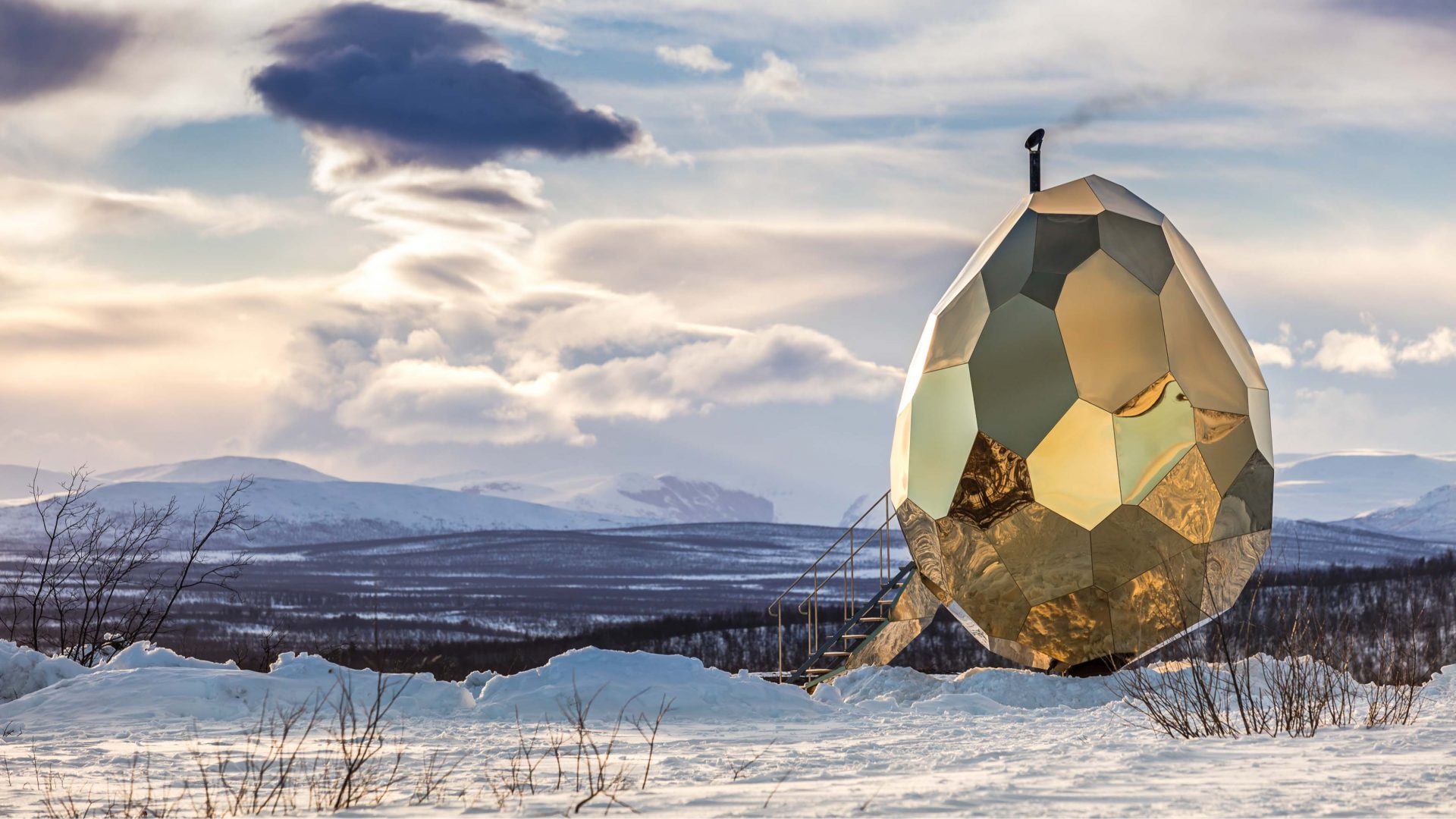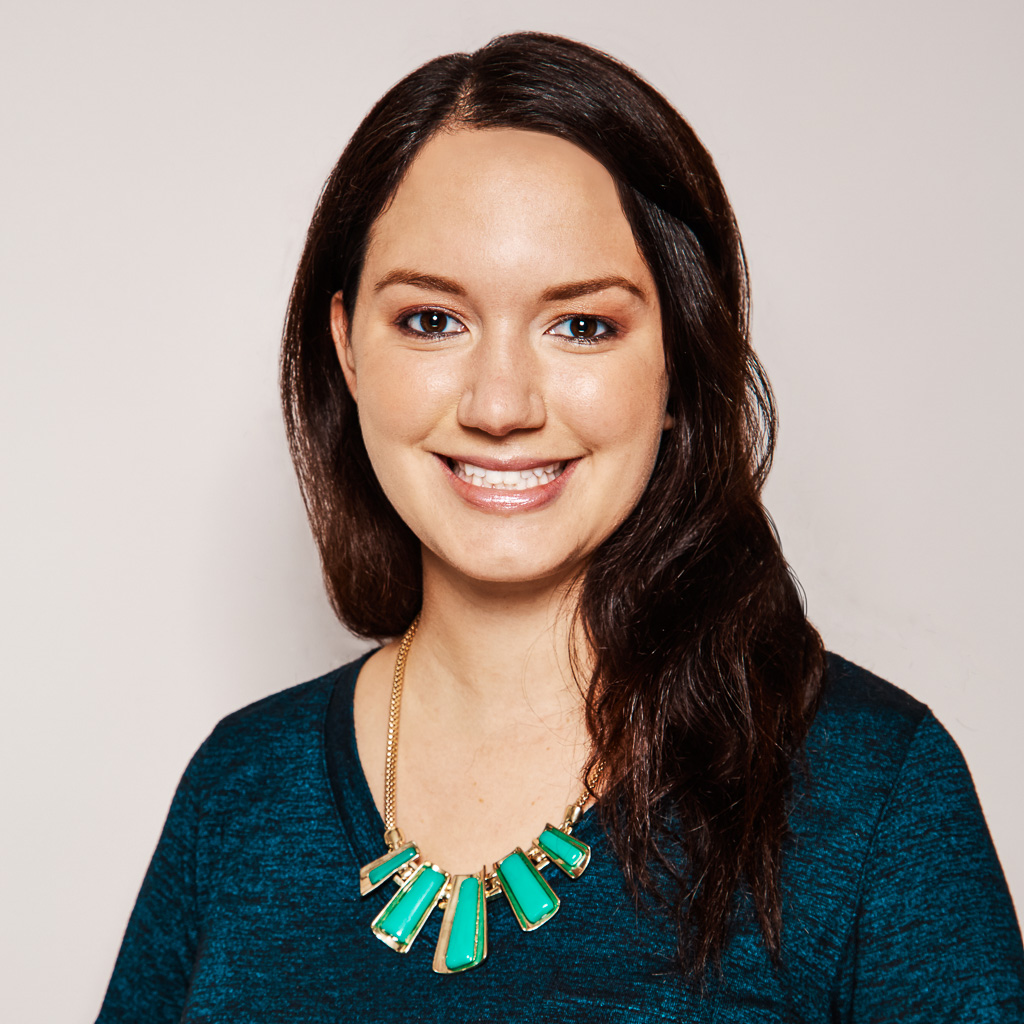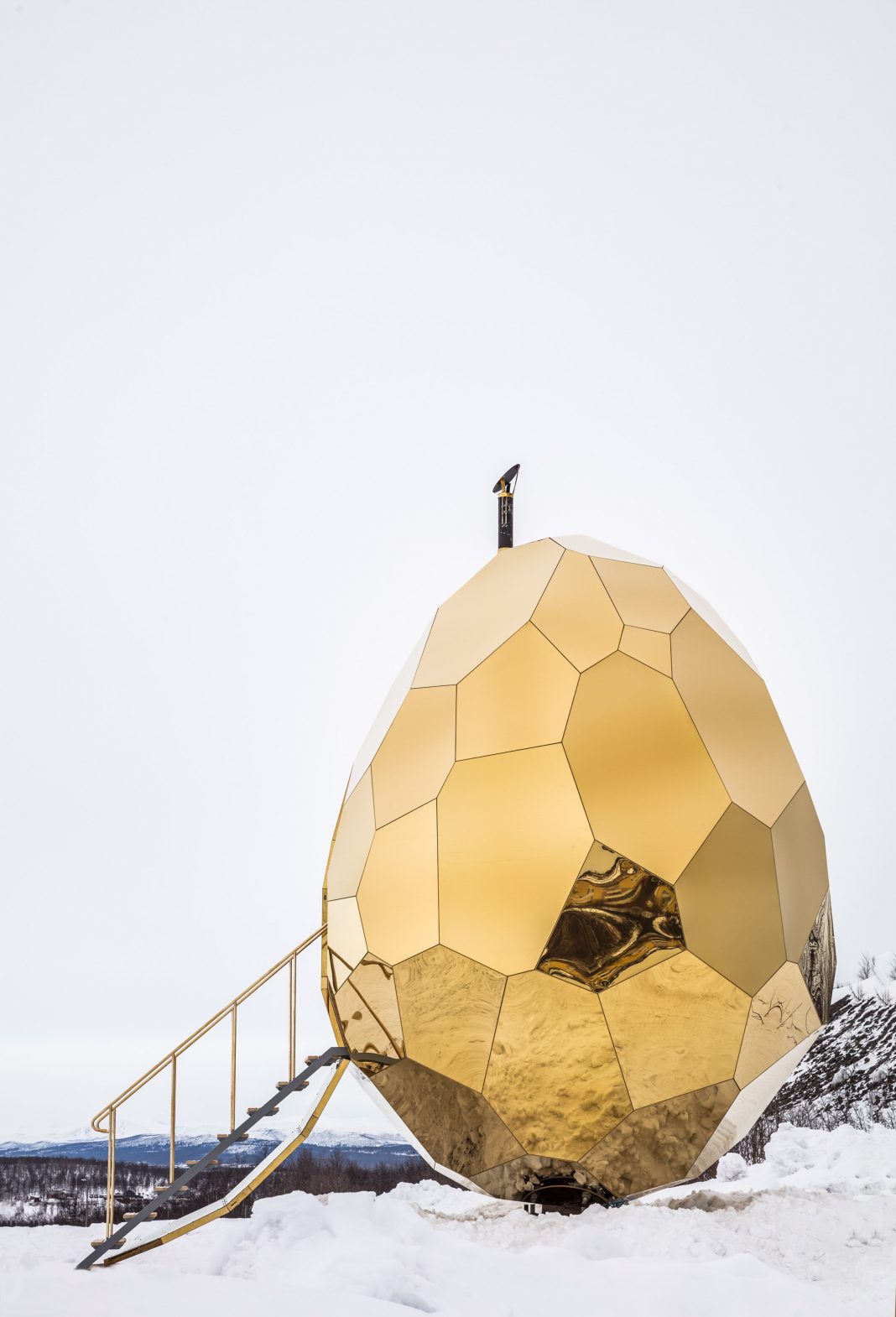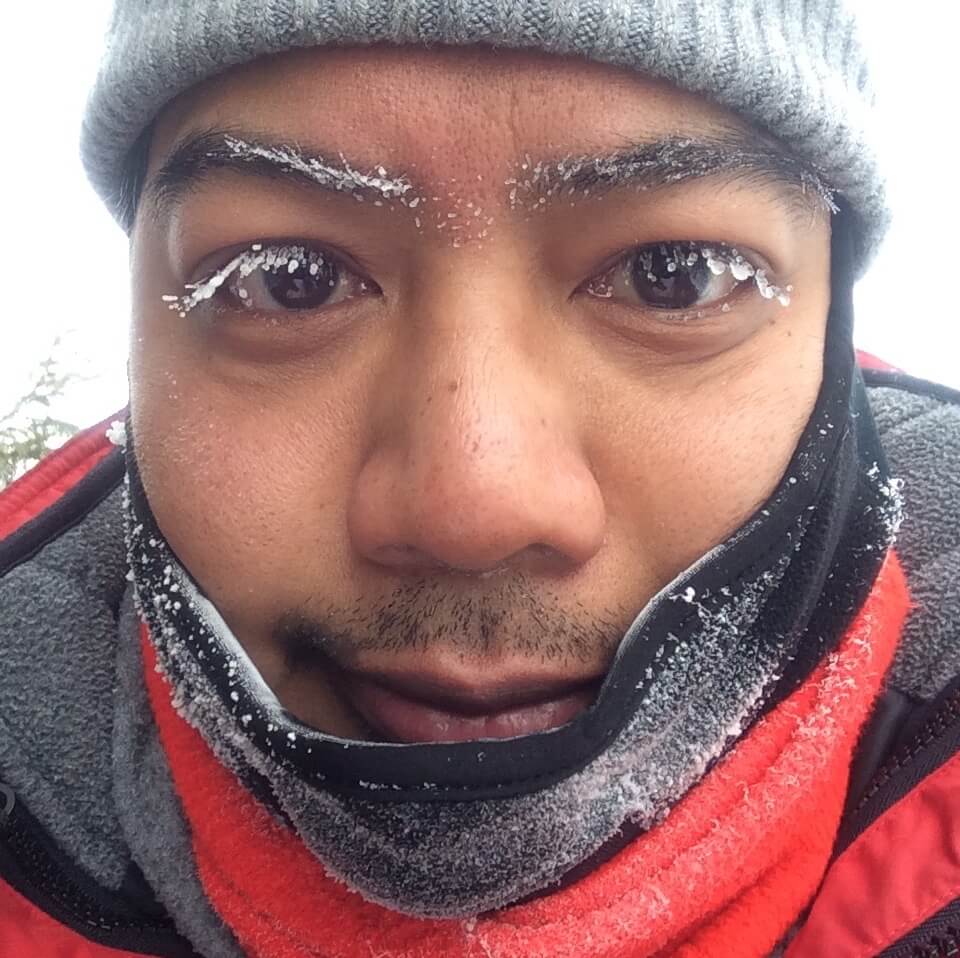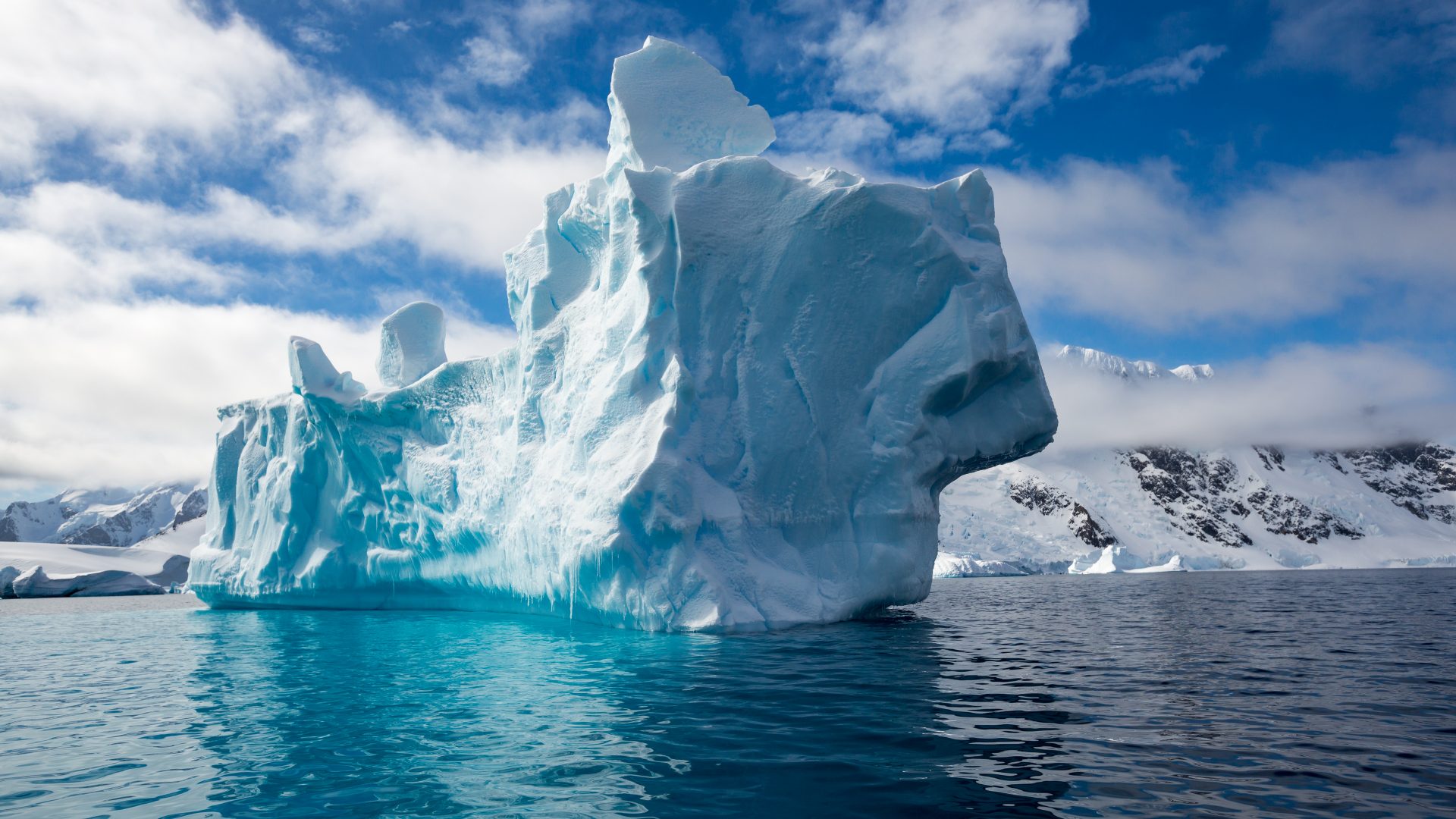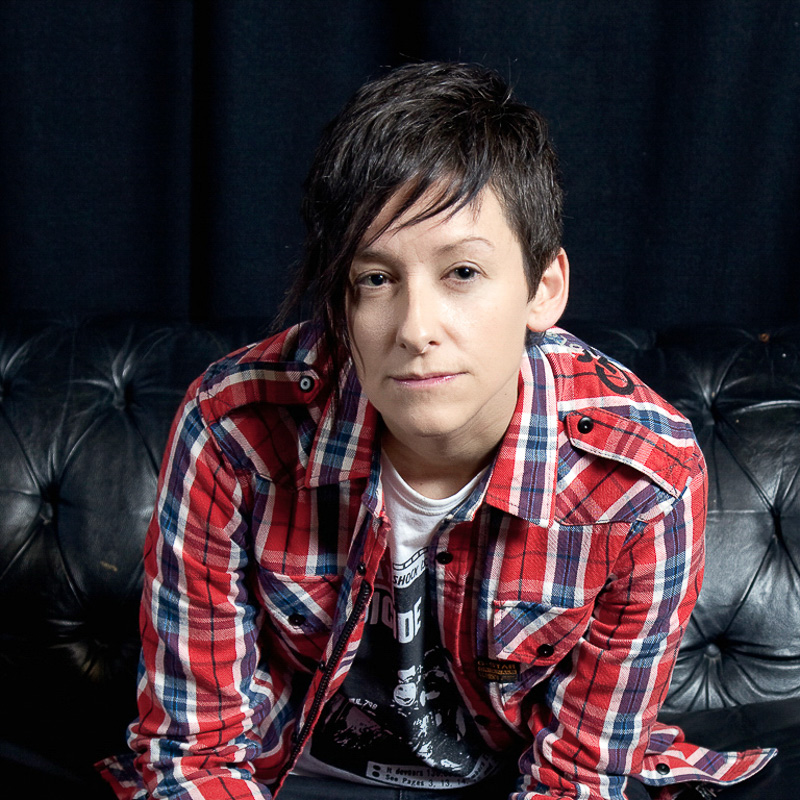An entire town in Sweden is sinking—and has to relocate. But this pop-up solar-powered sauna that doubles as a community think tank is not only bringing the town together, but also attracting more visitors to the Arctic Circle.
Kiruna, Sweden is sinking. After decades of iron ore mining, the Arctic town’s foundation has become unstable. The solution? Move the entire town three kilometers (two miles) east, and continue mining for another 20 years.
The decision was not an easy one to make or execute. On one hand, it was completely necessary: the Luossavaara-Kiirunavaara Aktiebolag underground iron ore mine, the largest and most modern of its kind in the world, is responsible for the existence and livelihood of Kiruna, Sweden’s northernmost town. It produces over 26 million tons of iron ore each year; that’s 90% of all the iron in Europe, and enough of it to build six Eiffel Towers a day. The mine employs a significant portion of the local population, and they live in symbiosis, says Kiruna deputy mayor, Niklas Siren. “There is no town without the mine and no mine without the town.”
And yet because of the mine, there’s about to be no Kiruna—at least where it currently sits. As iron extractions extend further underneath the town, waste rock fills the cavities, causing the ground to shift. At this point, it would only be a matter of time before the buildings sink into the earth.
Many factors of the move are proving hard to reconcile. Kiruna’s residents have to say goodbye to the neighborhoods and landmarks that have defined their memories for generations. Though the mine is paying residents 125% the value of their homes, rebuilding Kiruna is estimated to cost $2 billion: the cost of living is going to rise, significantly affecting locals’ lifestyles.
“A town is not just buildings, but also people,” laments Kiruna resident, Vicar Lars Jarlemyr. “When you tear it down, you do the same with a community.” There’s also the obvious controversy of what the mine has done—and continues to do—to the environment. Is the iron worth more than the land that produces it?
“We think that art, in which you are submerged and experience with all your senses, could be a place where you see things differently,” says Mats Bigert, one of the two artists behind the Solar Egg. “A sauna is already an interesting site where everyone participating in the activity is stripped of their identity somehow. Here, one can meet without prejudice and hopefully create a very creative situation.”
Bigert insists that the installation does not advocate for any one side of the topic, but is a ‘think tank,’ and should be treated as a philosophical tool for visitors to use the way they see best. “If you come up with ideas on how to strengthen the sustainability of your community, we would be very happy,” he says.
Though meant for locals, visitors are encouraged to visit the Solar Egg, as well. Make a reservation here, or have an area specialist like Off the Map Travel add it on as part of a larger Arctic itinerary.
